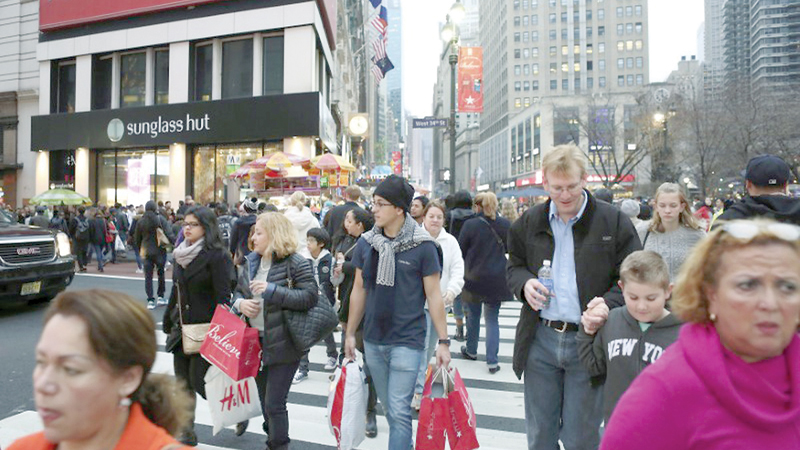

WASHINGTON: US consumer prices rose less than expected in August as increases in gasoline and rents were offset by declines in healthcare and apparel costs, and underlying inflation pressures also appeared to be slowing.
Despite the moderate consumer price increases last month, inflation remains underpinned by a tightening labour market and robust economic growth. Labour market strength was reinforced by other data on Thursday showing the number of Americans filing for unemployment aid dropped last week to near a 49-year low.
“With labour market conditions tight, wage growth accelerating and input prices being pushed up by capacity constraints and recently imposed tariffs, there is plenty of upward pressure on prices,” said Paul Ashworth, chief US economist at Capital Economics in Toronto.
The Consumer Price Index increased 0.2 per cent last month after a similar gain in July. In the 12 months through August, the CPI rose 2.7 per cent, slowing from July’s 2.9 per cent advance. Excluding the volatile food and energy components, the CPI edged up 0.1 per cent. The so-called core CPI had increased by 0.2 per cent for three straight months.
In the 12 months through August, the core CPI gained 2.2 per cent after rising 2.4 per cent in July. Economists polled by Reuters had forecast the CPI climbing 0.3 per cent and the core CPI gaining 0.2 per cent in August.
The inflation report came on the heels of data on Wednesday showing producer prices falling in August for the first time in 1-1/2 years.
The dollar, which has gained more than 6 per cent this year against the currencies of the United States’ main trade partners, is weighing on the prices of goods such as apparel.
August’s tepid consumer price gains did not change expectations that the Federal Reserve will raise interest rates at its September 25-26 policy meeting. The US central bank has lifted rates twice this year.
The Fed tracks a different inflation measure, the personal consumption expenditures (PCE) price index excluding food and energy, for monetary policy. The core PCE price index increased 2.0 per cent in July, hitting the Fed’s 2 per cent target for the third time this year.
“Of course there is always significant month-to-month volatility in the subcomponents, but looking out longer-term we continue to believe that the most likely outcome is a gradual firming in consumer price inflation,” said Michael Feroli, an economist at JPMorgan in New York. “At this point in the cycle the Fed’s concerns appear to be shifting from undesirably low inflation to undesirably high inflation.”
Healthcare costs decreased 0.2 per cent for a second straight month as prices for doctor and hospital services fell. Apparel prices tumbled 1.6 per cent, the biggest drop since 1949. It was the third straight monthly decline in apparel prices.
New motor vehicle prices were unchanged last month, but the cost of used cars and trucks rose for a third consecutive month. In another report on Thursday, the Labour Department said initial claims for state unemployment benefits slipped 1,000 to a seasonally adjusted 204,000 for the week ended September 8, the lowest level since December 1969.
Economists had forecast claims rising to 210,000 in the latest week. The four-week moving average of initial claims, considered a better measure of labour market trends as it irons out week-to-week volatility, fell 2,000 last week to 208,000, also the lowest level since December 1969.
The labour market continues to strengthen, with nonfarm payrolls increasing by 201,000 jobs in August and annual wage growth notching its biggest gain in more than nine years. Job openings hit an all-time high of 6.9 million in July. — Reuters
Oman Observer is now on the WhatsApp channel. Click here



